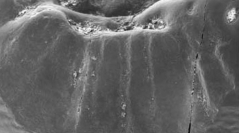

 Comptes Rendus Palevol
12 (5) - Pages 279-291
Comptes Rendus Palevol
12 (5) - Pages 279-291Identification of the individuals represented in a fragmentary fossil assemblage is a key step in paleobiological research, as ensuing organism-level studies, as well as sampling strategies (e.g., DNA, isotopes, dating, etc.), may depend on the reliability of such estimates. In the human fossil record, dental remains represent the most abundant and informative material, allowing individual identification on the basis of a variety of diagnostic criteria. In this paper, we present a procedure for sequential association of the dental remains and the identification of the minimum number of individuals (MNI) represented in the 49,000-year-old Neandertal assemblage from El Sidrón (Asturias, Spain). In order to quantify the possible association errors, the 12 criteria used in this study are organised according to three levels of reliability. Following this procedure, a minimum of 13 individuals (seven adults, three adolescents, two juveniles and one infant) have been identified at El Sidrón, two of them uniquely represented by postcranial elements. A next step in this investigation foresees the development of methods for associating postcranial elements with the dentally-based identified individuals.
El Sidrón, Neandertals, Fossil assemblage, Individual number, Teeth, Tooth associations, Middle Paleolithic, Spain